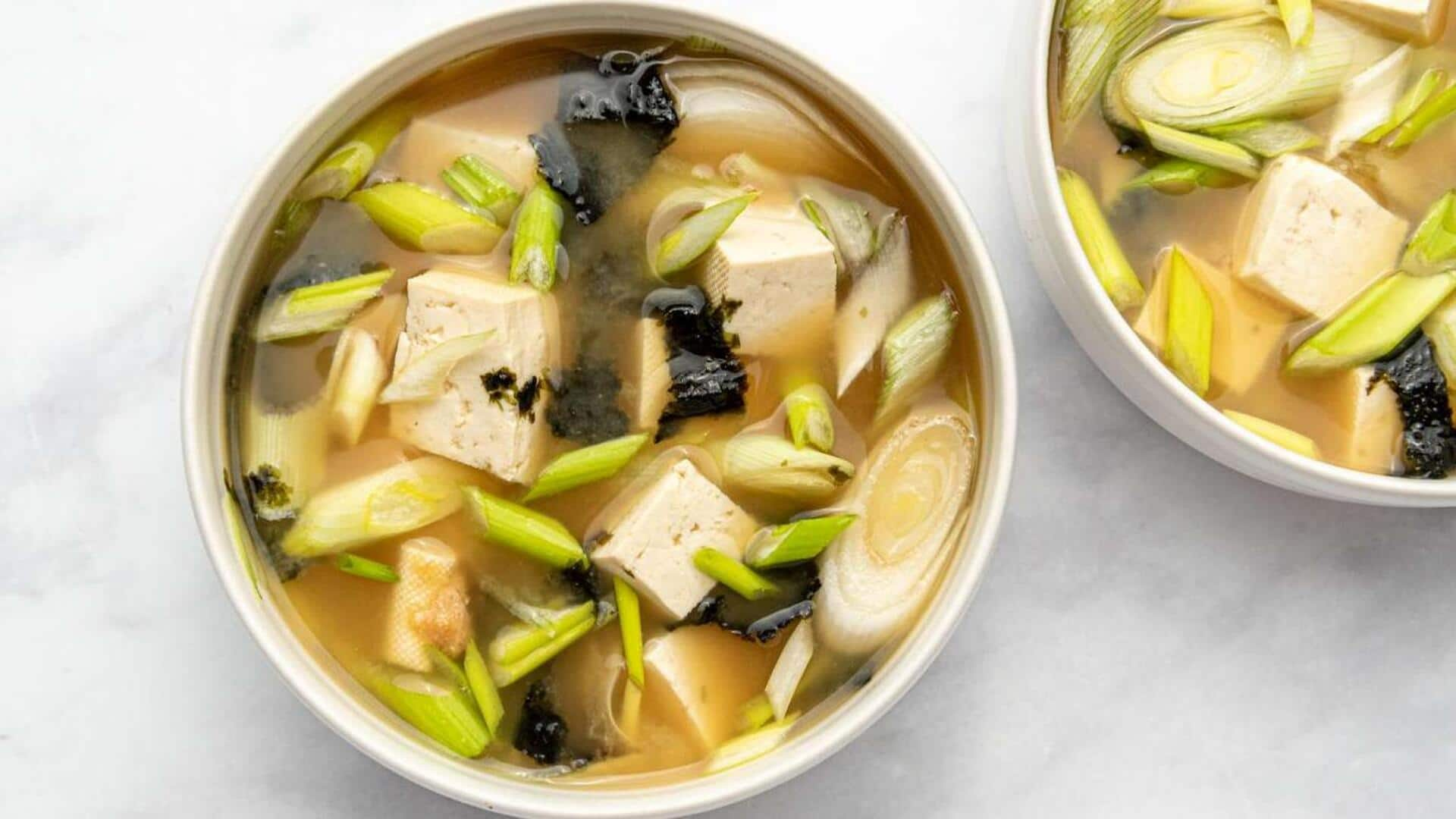
Tracing miso soup's roots: From ancient Japan to modern comfort
What's the story
A staple of Japanese cuisine, miso soup has a long history that goes back over a thousand years.
Miso paste came to Japan from China, introduced by Buddhist monks. It eventually morphed into the comforting soup we know today.
The simplicity of its ingredients- miso paste, tofu, seaweed, and green onions- belies its cultural significance and nutritious value.
Here's how miso soup made it from the past to our kitchens.
Historical path
Evolution through centuries
The evolution of miso soup is inherently linked to Japan's agricultural growth.
Once limited to the nobility due to the labor-intensive process of fermentation, miso became widely available as production methods advanced.
By the Edo period (1603-1868), it had become a staple household item across Japan.
Each region created its own variations based on locally available ingredients and taste, leading to the diverse flavors today.
Health aspects
Nutritional benefits
Miso soup is not just comforting, it's also nutritious.
Being fermented soybean-based, it packs essential nutrients such as vitamins B and E, calcium, iron, and protein.
The fermentation process also promotes gut health by adding healthy probiotics into the gut.
Plus, low on calories but high on flavor, it makes a perfect addition to any health and wellness-focused diet plan.
Contemporary twist
Modern adaptations
In recent years, chefs across the globe have celebrated miso soup's versatility by adding non-traditional ingredients like mushrooms or spinach for an extra layer of texture and flavor complexity.
Some even play around with different kinds of miso paste—like white for sweetness or red for depth—while still keeping it authentic to create new taste profiles.
Home preparation
Tips for making miso soup at home
Making miso soup at home can be deceptively simple with a few tips:
Start with a quality dashi stock as your base. Add vegetables such as carrots or daikon radish for the extra nutrition.
Dissolve miso paste gently without boiling to preserve probiotics.
Finally, garnish with fresh herbs or sesame seeds before serving hot alongside steamed rice or salad dishes if desired.